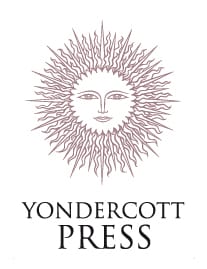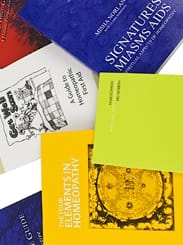

Signatures, Miasms, AIDS
Spiritual Aspects of Homeopathy
Misha Norland
Printed: in the UK, paperback
ISBN: 9780954476601
Size: 148 x 210mm
Pages: 229
Weight: 0.39kg
RRP: £15.99
Misha's depth of understanding and philosophical outlook shine through in this wonderfully fascinating book full of original thought and unforgettable remedy signatures.
Signatures, Miasms, AIDS shows how a deeper knowledge of two key concepts, miasms and the doctrine of signatures, can enrich our understanding of remedies and the diseased states we encounter in our patients. It also helps bridge the gap between spiritual and scientific worldviews.
- The book examines the historical and alchemical background of healing.
- A well practiced, clear and concise model for potency selection is included.
- New light is cast on Hahnemann's original three miasms, while Tubercular, Cancer and AIDS miasms are examined in depth.
- New information is included from the extensive provings of the AIDS nosode and the frequently-used remedy, Falco Peregrinus.
Quotes
Misha Norland is my dear friend and valued colleague for over two decades. He has a solid foundation in classical homeopathy, both in its philosophy and practice. Yet, he has the openness and creativity to explore new avenues and latest advances.
Dr. Rajan Sankaran, Homeopath, Author
For more than twenty years Misha has been a central figure in our world of homeopathy, and rightly so. He's a wonderful blend of a seeker's yearning to understand this world in great depth and a practical dynamo who makes things happen.
David Warkentin, Founding Director, Kent homeopathic Associates
I have known Misha for nearly 30 years. His dedication to the Art and Spirit of homeopathy is manifest through his wonderful teachings and collaborations on both sides of the Atlantic. His courses are renowned for their excellence in homeopathic learning the world over.
Miranda Castro FSHom, Homeopath, Author, Educator
If ever a new book on miasms was needed, it is this one. Instead of repeating what everybody else has already written about miasms, Misha takes a fresh look at them and at the Doctrine of Signatures. This is a well-written book I would certainly recommend without hesitation.
Dr. J. Roczenzwaig, New Zealand Homeopathic Links
Signatures, Miasms, Aids - a review
Reviewed by Dr Roczenzwaig, MD, Ph.D
Homeopathic Links, Summer 2004
If ever a new book on miasms was needed, it is this one. Instead of repeating what everybody else has already written about miasms, Misha Norland take fresh look at them and at the Doctrine of Signatures.
Going through the different philosophies and religions, he interprets the miasm according to those, showing how they belong to our daily lives, no matter what our beliefs, or lack of, are.
Miasms become actual entities we recognise no matter through which prism they are looked at, they become really alive and not just a theoretical scaffolding.
The Doctrine of Signatures is also approached that way, although not in such depth. It is clearly emphasised as a means of learning, of memorisation and examination, not as a scientific instrument, discovering hidden qualities of a substance.
The book continues with an analysis of the new AIDS miasm and its proving; the interesting approach here is the parallel drawn between the clinical and biological evolution of the disease AIDS and the appearance and behaviour of the miasm, as reflected in the proving too.
The interesting proving of Falco Peregrinus is thrown in as an illustration of a remedy belonging to the AIDS miasm and the Doctrine of Signatures is used to illustrate the choice of the substance for the proving: well done!
In its conclusion, there is a 'Developmental model of miasms' where the socio-cultural presentation of miasms is re viewed; absolutely fascinating!
The appendix of the book relates potencies with elements: Fire, Air, Water and Earth. This was explored in detail earlier on by David Little. But although it makes an interesting reading, I am not sure I would adopt it as my potency selection, it is too speculative for my personal taste.This is a well written book I would certainly recommend to everybody who is studying miasms, without hesitation.
Thirteen polychrest remedies are then viewed and analysed in the light of their multi-miasmatic belonging, clearly demonstrating that there is not a single remedy exclusively covering a single miasm, although there are predominances, some of them being major, like Sulphur and Psora. This will very much rejoice those of us who claim that a remedy well chosen as it can be, will never destroy a miasm; but that is another huge discussion
Misha Norland is my dear friend and valued colleague for over two decades. He has a solid foundation in classical homeopathy, both in its philosophy and practice. Yet, he has the openness and creativity to explore new avenues and latest advances.
Dr. Rajan Sankaran, Homeopath, Author
For more than twenty years Misha has been a central figure in our world of homeopathy, and rightly so. He's a wonderful blend of a seeker's yearning to understand this world in great depth and a practical dynamo who makes things happen.
David Warkentin, Founding Director, Kent homeopathic Associates
I have known Misha for nearly 30 years. His dedication to the Art and Spirit of homeopathy is manifest through his wonderful teachings and collaborations on both sides of the Atlantic. His courses are renowned for their excellence in homeopathic learning the world over.
Miranda Castro FSHom, Homeopath, Author, Educator
If ever a new book on miasms was needed, it is this one. Instead of repeating what everybody else has already written about miasms, Misha takes a fresh look at them and at the Doctrine of Signatures. This is a well-written book I would certainly recommend without hesitation.
Dr. J. Roczenzwaig, New Zealand Homeopathic Links
Signatures, Miasms, Aids - a review
Reviewed by Dr Roczenzwaig, MD, Ph.D
Homeopathic Links, Summer 2004
If ever a new book on miasms was needed, it is this one. Instead of repeating what everybody else has already written about miasms, Misha Norland take fresh look at them and at the Doctrine of Signatures.
Going through the different philosophies and religions, he interprets the miasm according to those, showing how they belong to our daily lives, no matter what our beliefs, or lack of, are.
Miasms become actual entities we recognise no matter through which prism they are looked at, they become really alive and not just a theoretical scaffolding.
The Doctrine of Signatures is also approached that way, although not in such depth. It is clearly emphasised as a means of learning, of memorisation and examination, not as a scientific instrument, discovering hidden qualities of a substance.
The book continues with an analysis of the new AIDS miasm and its proving; the interesting approach here is the parallel drawn between the clinical and biological evolution of the disease AIDS and the appearance and behaviour of the miasm, as reflected in the proving too.
The interesting proving of Falco Peregrinus is thrown in as an illustration of a remedy belonging to the AIDS miasm and the Doctrine of Signatures is used to illustrate the choice of the substance for the proving: well done!
In its conclusion, there is a 'Developmental model of miasms' where the socio-cultural presentation of miasms is re viewed; absolutely fascinating!
The appendix of the book relates potencies with elements: Fire, Air, Water and Earth. This was explored in detail earlier on by David Little. But although it makes an interesting reading, I am not sure I would adopt it as my potency selection, it is too speculative for my personal taste.This is a well written book I would certainly recommend to everybody who is studying miasms, without hesitation.
Thirteen polychrest remedies are then viewed and analysed in the light of their multi-miasmatic belonging, clearly demonstrating that there is not a single remedy exclusively covering a single miasm, although there are predominances, some of them being major, like Sulphur and Psora. This will very much rejoice those of us who claim that a remedy well chosen as it can be, will never destroy a miasm; but that is another huge discussion
Misha's philosophical outlook shine through in this wonderfully fascinating book




